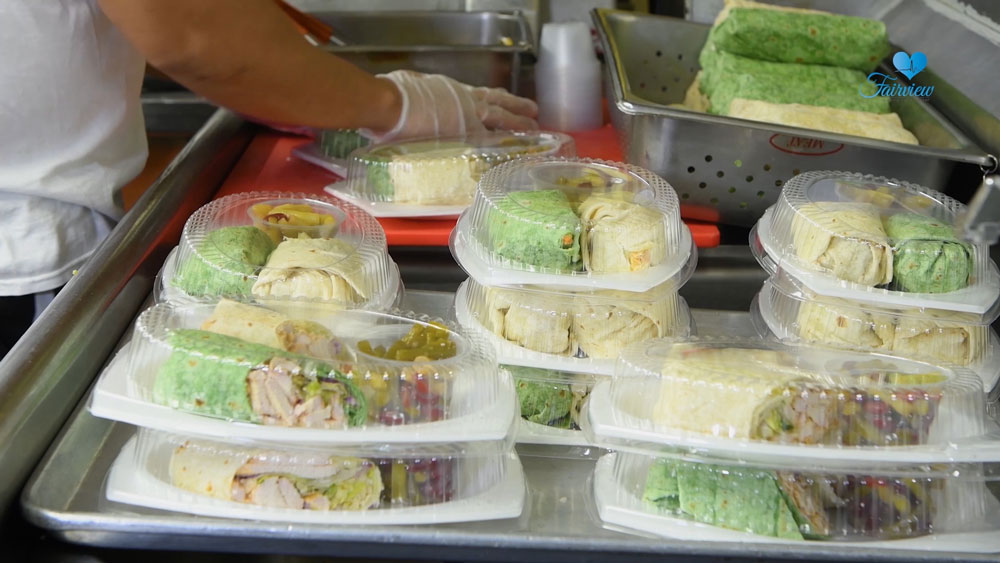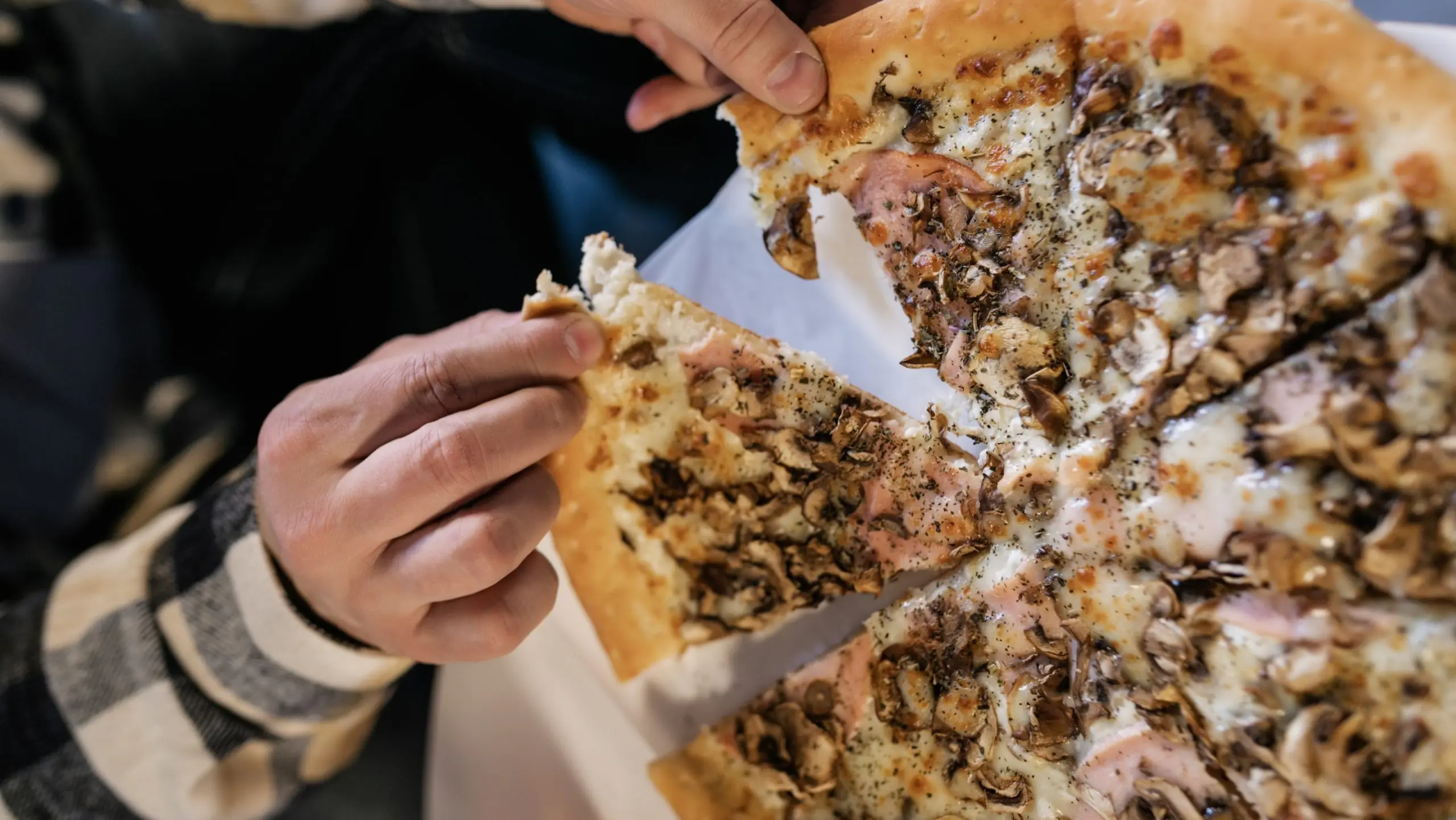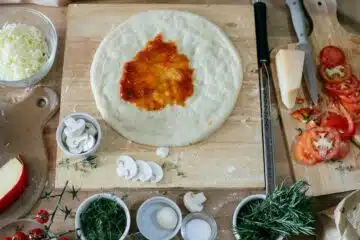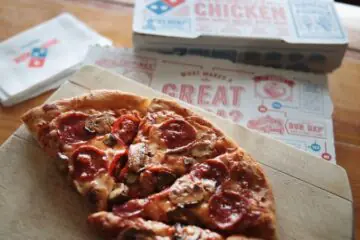Yes, it is generally safe to eat pizza with a stoma, as long as you choose the right toppings and chew your food thoroughly. However, it’s important to consider the kind of preparation and toppings used in the pizza to ensure it is suitable for individuals with a stoma.
Pizza is a highly processed food rich in unhealthy trans and saturated fats, so it’s recommended to opt for healthier options and limit the consumption of pizza. By being mindful of the toppings and portion control, individuals with a stoma can still enjoy pizza as part of their diet.

Credit: www.fairviewrehab.com
Introduction To Eating Pizza With A Stoma
Pizza can be enjoyed with a stoma by choosing cooked, de-skinned, and non-seeded toppings. It’s important to chew well and take small sips of water while eating to prevent discomfort.
Understanding The Challenges Of Eating With A Stoma
Having a stoma can present unique challenges when it comes to eating certain foods. The stoma is a surgical opening in the abdomen that allows waste to be expelled from the body after the digestive process. While it can greatly improve the quality of life for individuals with digestive disorders or other medical conditions, it also requires some adjustments to diet and eating habits.
Eating with a stoma can be challenging due to the potential for blockages, discomfort, or changes in bowel movements. Certain foods, including those high in fiber, seeds, or skins, can be difficult for the digestive system to process and may cause complications. It is important to understand the limitations and precautions to ensure a safe and comfortable eating experience.
The Importance Of A Balanced Diet For Stoma Patients
Having a balanced diet is crucial for stoma patients to maintain overall health and well-being. A balanced diet ensures that the body receives all the necessary nutrients, vitamins, and minerals for optimal function. It is especially important for stoma patients to pay attention to their diet as certain foods can impact bag wear-time, gas production, stool consistency, and odor.
When it comes to eating with a stoma, it is recommended to focus on consuming a variety of fruits, vegetables, whole grains, lean proteins, and healthy fats. These foods provide essential nutrients and support proper digestion and bowel function. Additionally, staying hydrated is important to prevent dehydration and ensure proper digestion and absorption of nutrients.
While it’s understandable to have concerns about enjoying your favorite foods, such as pizza, with a stoma, it is still possible to do so. However, some modifications may be necessary to make it a safe and comfortable experience. It’s important to consider the type of ingredients used, as well as the portion size and chewing thoroughly to aid digestion.
Guidelines For Eating Pizza With A Stoma
Starting Small And Testing Your Tolerance
When it comes to eating pizza with a stoma, it’s always recommended to start small and test your tolerance. Instead of indulging in a whole box of pizza, begin with a single slice. This approach allows you to gauge how your body responds and prevents overloading your digestive system. It’s crucial to monitor any discomfort, bloating, or gas that may occur after consuming pizza. By starting small, you can gradually increase your intake over time, ensuring your body adapts well to this type of food.
Hydrating While Eating To Aid Digestion
Another essential guideline for eating pizza with a stoma is to hydrate while you eat. Sipping small amounts of water throughout your meal can aid digestion and make the eating process smoother. Hydration helps to break down the food and ensures it moves easily through your digestive system. It also prevents any potential blockages that could occur due to the texture of the pizza. By staying well-hydrated, you can optimize your digestive health and minimize discomfort or complications related to eating pizza with a stoma.
Choosing The Right Type Of Pizza
You can enjoy pizza with a stoma, but it’s important to choose cooked, de-skinned, and non-seeded tomato toppings. Be cautious and start with a small portion, chew well, and stay hydrated while eating. Skip spicy toppings and excessive amounts to avoid discomfort.
Opting For Cooked, De-skinned, And Non-seeded Tomatoes
When it comes to enjoying pizza with a stoma, it’s important to choose the right type of toppings and ingredients. One key ingredient to consider is tomatoes. While raw tomatoes may pose a challenge for some individuals with a stoma, cooked, de-skinned, and non-seeded tomatoes can be a safer option.
Cooking tomatoes helps to break down their fibers, making them easier to digest. Additionally, removing the skin and seeds can further reduce the risk of irritation or blockages. By opting for cooked, de-skinned, and non-seeded tomatoes on your pizza, you can still enjoy the delicious flavor of tomatoes without compromising your stoma’s health.
Here are a few reasons why cooked, de-skinned, and non-seeded tomatoes are a preferable choice:
- Cooking tomatoes helps to break down their fibers, making them easier to digest.
- Removing the skin helps to eliminate any potential obstacles for the stoma.
- By removing the seeds, you reduce the risk of blockages and irritation.
So, next time you order a pizza, consider opting for cooked, de-skinned, and non-seeded tomatoes as a topping. Not only will you be able to enjoy the delicious taste of tomatoes, but you’ll also have peace of mind knowing that you’re making a stoma-friendly choice.
Considering Alternative Toppings And Ingredients
While tomatoes can be a great addition to your pizza, it’s also important to consider alternative toppings and ingredients that can complement your stoma’s needs. By choosing the right combination of toppings and ingredients, you can create a delicious and stoma-friendly pizza.
Here are a few alternative toppings and ingredients to consider:
- Lean proteins like chicken or turkey can add a healthy twist to your pizza.
- Load up on vegetables like spinach, mushrooms, and onions for added flavor and nutrients.
- Opt for low-fat cheese options to reduce the amount of saturated fats in your pizza.
By being mindful of the toppings and ingredients you choose, you can create a pizza that not only satisfies your taste buds but also takes into account your stoma’s health. Remember to chew your food thoroughly and take small sips of water while eating to aid in digestion.
In conclusion, choosing the right type of pizza with a stoma is possible by opting for cooked, de-skinned, and non-seeded tomatoes and considering alternative toppings and ingredients. By making these small adjustments, you can enjoy a delicious pizza while keeping your stoma’s well-being in mind.
Managing Digestion And Discomfort
Living with a stoma can present some challenges when it comes to digestion and discomfort. However, with some careful considerations and modifications to your diet, you can still enjoy your favorite foods, including pizza. In this section, we’ll explore some strategies to help you manage digestion and discomfort while enjoying that delicious slice of pizza.
Avoiding Spices And Excessive Seasoning
One way to manage digestion and discomfort when eating pizza with a stoma is by avoiding spices and excessive seasoning. Spices such as garlic, onion, and chili powder can be irritating to the digestive system, leading to gas, bloating, and discomfort. Additionally, excessive seasoning, such as a heavy hand with salt or pepper, can also contribute to digestive issues.
When ordering or making pizza, opt for milder toppings and seasonings. Avoid toppings like spicy sausage, hot peppers, or garlic-heavy sauces. Instead, choose toppings like grilled chicken, fresh vegetables, or a mild tomato sauce. By opting for milder flavors, you can reduce the likelihood of digestive discomfort while still enjoying the taste of pizza.
Dealing With Gas, Odor, And Bloating
Gas, odor, and bloating can be common concerns when eating pizza with a stoma. The combination of ingredients and the process of digestion can lead to increased gas production and a stronger odor. However, there are steps you can take to minimize these issues.
- Avoid carbonated beverages: Carbonated beverages like soda or sparkling water can contribute to gas and bloating. Opt for still water or herbal teas instead.
- Eat slowly and chew thoroughly: Eating too quickly or not chewing your food thoroughly can lead to excess air swallowing and increased gas production. Take your time to enjoy each bite and chew your food thoroughly before swallowing.
- Stay hydrated: Drinking enough water can help with digestion and prevent constipation, which can exacerbate gas and bloating. Aim to drink plenty of water throughout the day.
- Consider digestive aids: If you frequently experience gas, odor, or bloating after eating, you may consider using digestive aids like peppermint oil capsules or digestive enzymes. These supplements can help support digestion and reduce symptoms.
By implementing these strategies, you can effectively manage gas, odor, and bloating when enjoying pizza with a stoma. Remember, everyone’s body is unique, so it may be helpful to keep a food diary and note which ingredients or toppings trigger more discomfort than others.
Balancing Nutrition While Enjoying Pizza
Pizza can still be enjoyed with a stoma by opting for cooked, de-skinned, and non-seeded tomatoes as toppings. Just remember to start small, stay hydrated, and avoid spicy seasonings to maintain gut health.
Balancing Nutrition While Enjoying Pizza
Considering the overall gut health impact of eating pizza
When it comes to maintaining a healthy diet with a stoma, it’s important to consider the impact of each food choice on your gut health. While it is possible to enjoy pizza with a stoma, it’s crucial to be mindful of the potential effects it may have on your digestion.
Foods to avoid and alternative options for a healthy diet
While the occasional slice of pizza may be indulgent, consuming large amounts of it can cause gas, odor, discomfort, and bloating which can put stress on your overall gut health. Here are some tips to help you balance nutrition while enjoying pizza with a stoma:
1. Start Small: Begin by testing a small portion of pizza to see how your body responds. This allows you to gauge your tolerance and make adjustments accordingly.
2. Hydrate: Take small sips of water while eating pizza to aid in digestion. Staying hydrated can help prevent constipation and maintain regular bowel movements.
3. Skip the Spices and High-Fat Toppings: Spicy ingredients and high-fat toppings like pepperoni and sausage can be difficult to digest and may lead to discomfort. Opt for milder toppings like vegetables or lean protein options instead.
4. Chew Thoroughly: Properly chewing your food is essential, especially when consuming heavier, more dense foods like pizza. Take your time to thoroughly chew each bite to ease the digestion process.
5. Listen to Your Body: Pay attention to how your body reacts to pizza. If you notice any digestive issues or discomfort, it may be best to reduce your intake.
In addition to these considerations, it’s important to prioritize a well-rounded diet that includes plenty of fruits, vegetables, lean proteins, and whole grains. If you find that consuming pizza regularly causes digestive problems, consider exploring alternative options for a healthy diet that are easier on your digestive system.
To conclude, while enjoying pizza with a stoma is possible, it’s important to be mindful of portion sizes, toppings, and how your body responds. By balancing your nutrition and making smart choices, you can still enjoy the occasional slice of pizza while maintaining a healthy diet with a stoma.
Frequently Asked Questions On Can You Eat Pizza With A Stoma
Can I Eat Pizza After Colostomy?
Yes, you can eat pizza after having a colostomy. Just make sure to choose cooked, de-skinned, and non-seeded tomatoes as toppings. It is important to test with a small portion and chew thoroughly while eating. Stay hydrated and avoid excessive spices and greasy toppings.
Enjoy your pizza!
Can You Eat Cheese With A Stoma?
Yes, you can eat cheese with a stoma. It is recommended to include full fat milk and cheese in your diet to increase calorie, fat, and protein intake for the healing process. (46 words)
Can You Eat Spaghetti With A Stoma?
Yes, you can eat spaghetti with a stoma. It is recommended to include low-fiber foods like white bread, pasta, and rice in your diet if you have a stoma.
Conclusion
It is possible to eat pizza with a stoma. However, it is important to consider the type of preparation and toppings used. Opt for cooked, de-skinned, and non-seeded tomatoes, and avoid excessive amounts of pizza to prevent gas, odor, discomfort, and bloating.
Remember to chew thoroughly, eat slowly, and hydrate while consuming pizza. With caution and moderation, you can still enjoy this beloved food after having an ostomy procedure.

As the author of the “Ultimate Pizza Guide: Recipes, Tips & Secrets Revealed,” I’m dedicated to sharing my love for pizza and empowering others to create delicious homemade pizzas with ease. Join me on a journey to uncover the secrets to perfecting your pizza game!



